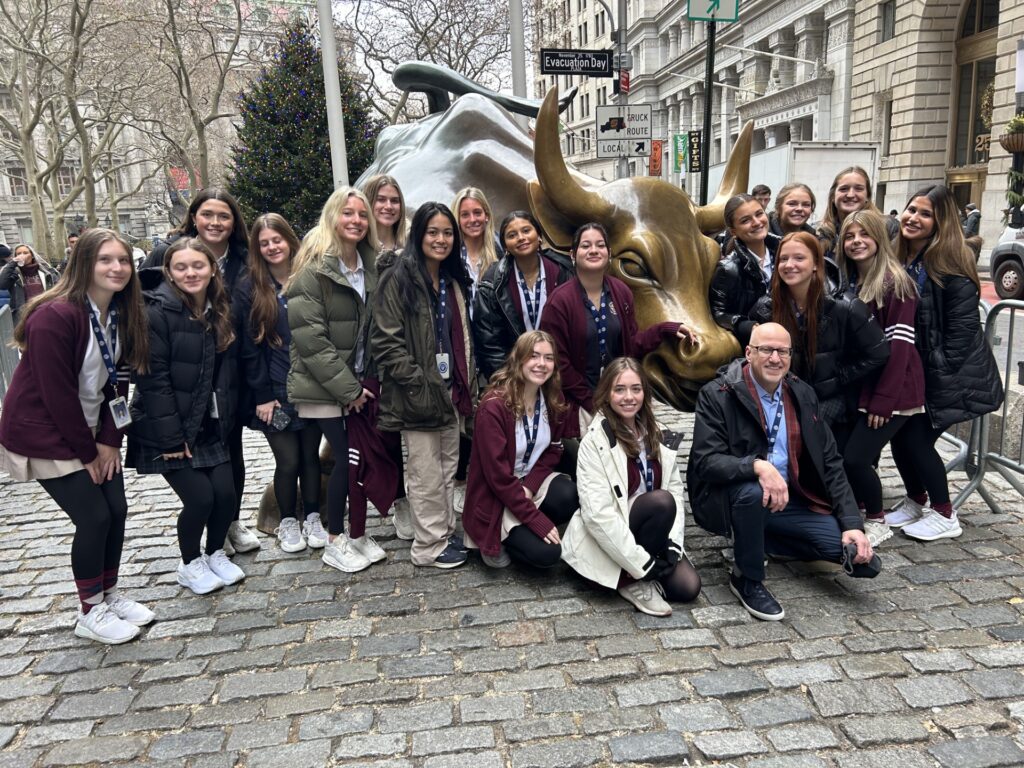
(This article first appeared as FLASH FRIDAY on Traders Magazine, a Markets Media Group publication. Sponsored by Instinet, FLASH FRIDAY is a weekly content series looking at the past, present and future of capital markets trading and technology.)
As a buy-side trader for more than 30 years, Darrin Sokol protected information so as to not give away intent and have a transaction go sideways.

Sokol now spends his days (during the school year) disclosing, revealing and sharing information — freely and openly.
A trader for Omega Advisors in the 1990s and then with Lazard Asset Management for more than 20 years, Sokol is now a finance teacher for the Academy of Saint Elizabeth, an all-girl high school located in Convent Station, New Jersey, 30 miles west of New York City.
Traders Magazine caught up with Sokol, 59, to learn more about his career pivot.
How did you first get into trading?
My mentor and former boss, and now a very close friend, is Lee Cooperman, the legendary Wall Street investor. He was head of Goldman Sachs Asset Management, ran research, and in 1991 left to open his own firm. That’s when he asked me to join as a trader.
I first met him when I was working at an employment agency that placed administrative assistants at financial firms. One of our biggest clients was Goldman Sachs. A coworker of mine was supposed to drive Mr. Cooperman one day and didn’t show up, so my boss asked me to step in. I had no idea who he was — I was just a kid from New Jersey — but he was incredibly nice and immediately started talking to me. During that first drive, he asked if I wanted to do it every day. He offered to pay for the car, the commuting costs, and to pay me on top of that. For the next four years, I drove him while still working at the agency, and I learned a lot just from being around him.
He’s a very generous guy, and also incredibly demanding, but never asked anyone to do something he wouldn’t do himself. I remember him bending down to pick up trash in the hallway and saying, “Why would people just walk past this? Pretend like this is your home.” He taught me great life lessons at a young age.
When he launched his firm in 1991, he brought me on. I started as an assistant trader — or clerk, junior, whatever you want to call it — and learned by doing. The head trader at the time left within the year, and I became the default trader. I wasn’t the head trader, I was just the only one there. Lee would call out orders and I’d be on the phone trying to figure it out. That was my real start in trading.
How did buy-side trading evolve during your career, and where do you see it headed?
Dating myself a bit here, but when I first started in 1991, it was very different. At the time, the money to be made was on the sell side. They were covering the buy side and making a lot of money off us. In 1991, commissions were six cents (per share) in some cases. Hedge funds could pay more—eight cents, ten cents a share. Can you imagine trading a couple million shares of Citigroup or Bank of America and brokers getting six or seven cents a share? They were making so much money, it was crazy.
On the buy side, you made money too, but not like the brokers. And the entertainment was totally different back then. They’d invite us to sporting events, it was part of building relationships. On both the buy and sell side, there had to be trust. If I’m giving you a million-share order, I need to know you’re not going to go tell someone who might trade ahead. That sense of trust and anonymity still exists today.
But a lot changed. Commissions are now close to zero. Clients push back because it eats into returns. And compliance is a bigger part of everything now.
Another big difference is how we communicate. When I started, you were on the phone all day. You gave someone an order by speaking to them. Now, it’s all electronic. You type in a Bloomberg chat, “buy this,” or “sell that,” and it just shows up in the system. You don’t even have to speak to people. It’s kind of nice, but you lose something too. Most traders today have never known anything else. They’ve never had to pick up the phone.
What accomplishment stands out most in your trading career?
I’ve never been one to talk much about myself, but if I had to point to something, it would be reaching the level I did. When I started as a trader assistant more than 30 years ago, I never would’ve imagined I’d one day be running the global equity trading desk at an asset management firm with over $200 billion in assets. I oversaw the trading offices in New York, London, and Sydney. I became a managing director at Lazard, which is like partner level, and served on several committees. Toward the end, I even joined the executive committee. So, if you’re measuring professional success by how far you climb the ladder, I think I made it pretty far, especially for someone who didn’t graduate college and started out as a driver.
What led you to transition into education?
After I left Lazard in 2023, I thought retirement would be all about sitting on the beach, drinking piña coladas, and enjoying the scenery. But it turns out, at least for me, that wasn’t enough. I realized I needed a purpose, something I cared about. You can only sit around for so long, especially when most of your friends are still working.
At the time, my daughter was a freshman at the Academy of Saint Elizabeth, an all-girls high school in New Jersey that my older daughters had also attended. Eventually, I reached out to the guidance counselor and mentioned that I had retired from Wall Street. I asked if there might be any interest in doing something finance-related at the school. It turned out they had already been thinking about starting something like that, so we set up a meeting and began with what was essentially a stock market club. I came in a couple of times to teach, and then they asked if I’d like to teach a part-time class on stock markets and finance the following semester. I said yes and I loved it.
Teaching gave me something I hadn’t really felt in my finance career. When you work on Wall Street, you can convince yourself that you’re helping clients with their money, and sure, that’s important, but you don’t necessarily feel like you’re making a meaningful difference in people’s lives. In the classroom, it’s different. These are 17-year-old girls who are trying to figure out who they are and what they want to do. Helping demystify finance for them, showing them how markets work and giving them the confidence to invest and ask questions—that feels like a real contribution.
We’ve had guest speakers, we took a trip to the New York Stock Exchange, and I even let the students help manage a small portion of my money using a real trading account. I think it gave them confidence and made the whole thing feel tangible. It’s one of the most rewarding things I’ve ever done. I never wanted my identity to be “Wall Street guy,” and now I’m incredibly proud to say I teach finance at an all-girls high school.

(photo courtesy of Darrin Sokol)
What are the most rewarding parts of teaching? Any surprises?
The most rewarding and honestly surprising part is how appreciated you can feel, not just by the students, but by their parents too. Last year was my first year of teaching, and I had mostly seniors. At graduation, I had parents coming up to me, hugging me, thanking me, telling me how much their daughters appreciated the class. Some of the girls didn’t know what they wanted to do going into college, but after taking the class, they realized they wanted to pursue something in business or finance.
There’s no amount of money that can give you that kind of feeling. And it was never about the money, as when I first started, it was as a volunteer. I told them not to pay me. I wasn’t doing it for that. It was about giving back.

Are there skills or lessons from your trading career that carry over into the classroom?
Absolutely. I’m still learning how to be a teacher, but one thing that carries over is the importance of kindness and respect. Students need to feel safe and comfortable asking questions. If they’re intimidated, it’s hard to learn.
My approach is a bit different from what you might find in more traditional classrooms. We play games like “pick the best stock of the week,” and I’ll give out a small prize like a Starbucks gift card. Some days we end a little early and I’ll put on music, just to help them relax.
It’s a stressful time for them, between college applications and figuring out who they are, so I try to create a supportive environment. And honestly, I’m learning from them, too. They help me with tech like Google Classroom, and I ask for feedback on how they want to learn. It’s a two-way street, and that’s part of what makes it so rewarding.
Any final thoughts?
I’d just like to reiterate my gratitude to Mr. Cooperman, as his generosity and support made a lasting impact on me.







